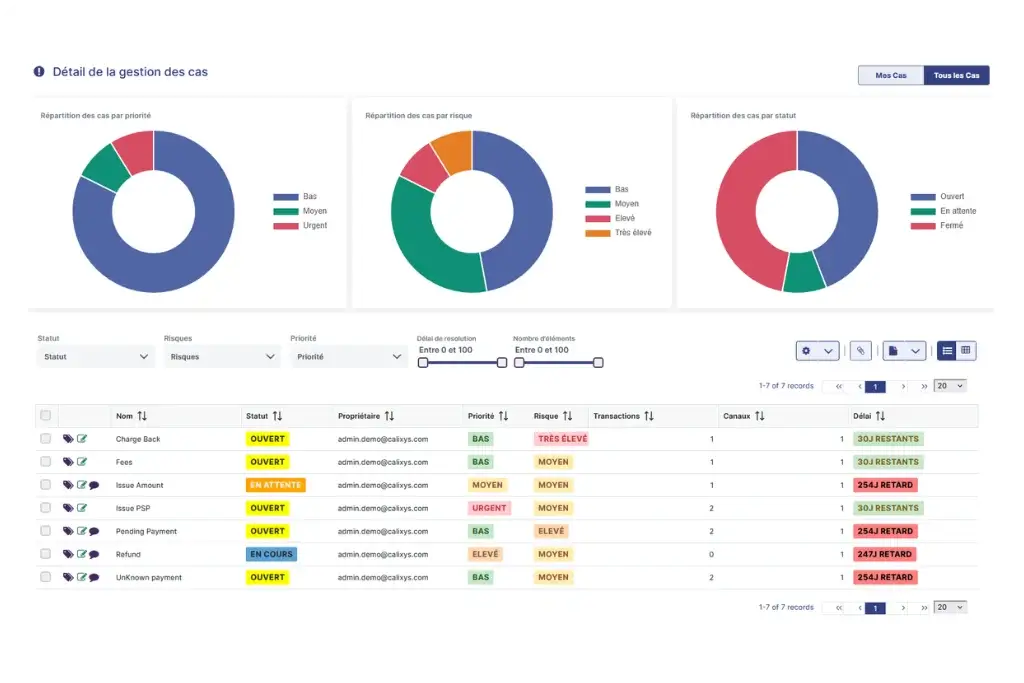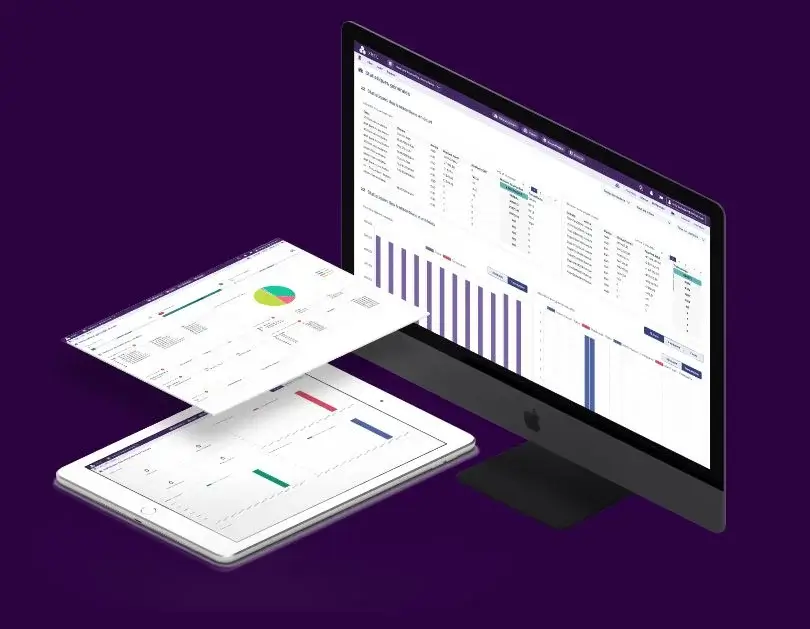Payment reconciliation: How to manage transaction peaks in winter ?

Publié
Le 19/02/2025, par :
- Tony Benedetti
Sections
Context
Winter periods, encompassing major commercial events such as Black Friday, Christmas, winter sales, Valentine’s Day, and ski vacations, represent crucial moments for e-commerce businesses and retailers with physical stores. While these periods offer significant revenue growth opportunities, they also pose operational challenges, particularly in financial flow management. Payment reconciliation—a crucial process to ensure consistency between recorded transactions and actual received funds—becomes particularly complex.
While customer experience and logistics often take center stage, financial teams must juggle an explosion of transactions, multi-channel payments, and increased reconciliation complexity. Inefficient financial flow management can impact cash flow, slow down financial closing, and generate costly discrepancies. It is therefore imperative to optimize payment reconciliation to turn this high-activity period into a controlled growth driver.
A Crucial Yet Demanding Period for E-Commerce Businesses
Winter months are synonymous with intense commercial activity, with a notable increase in transactions both online and in-store. According to the 2023 report from the Observatory for Payment Security, the year confirmed “a general increase in the use of scriptural payment methods (…),” with a 5.4% rise in the number of payments, “(…) driven by the dynamic adoption of new payment methods such as mobile payments and instant transfers,” along with continued strong e-commerce growth (banque-france.fr).
While this transaction growth benefits revenue, it creates significant challenges in financial flow management. Payment reconciliation, which involves comparing recorded transactions with funds received in bank accounts, becomes a daunting task due to the variety of payment methods, sales channels, payment service providers (PSPs), and currencies.
The Challenge: Transaction Reconciliation During Winter Peaks
The Multiplication of Payment Methods
What makes reconciliation complex is, in part, the diversity of payment methods used by end customers, each with its own processing cycle. These include traditional bank cards such as Visa or Mastercard, digital wallets (PayPal, Apple Pay, Google Pay, etc.), installment payments with Klarna, Alma, Oney, or others, as well as BNPL (Buy Now, Pay Later). Additionally, although still a minority, cryptocurrency payments and instant bank transfers are on the rise.
In 2023, mobile payments by smartphone accounted for 10.1% of proximity payments, a significant increase compared to 1.2% in 2020 (lemonde.fr).
Each of these payment methods imposes specific control rules for reconciliation. During peak activity, this diversity generates an overload of information to process, increasing the risk of errors and reconciliation delays.
Multi-PSP Reconciliation
To provide an optimal payment experience for customers, many merchants collaborate with multiple PSPs. Each PSP has its own reporting systems, settlement frequencies, fee structures, and financial data formats, further complicating payment reconciliation.
For example, a retailer may use one PSP for transactions on a specific e-commerce site and another for a different market or country, each with different settlement deadlines, making reconciliation more complex.
Thus, businesses must manage not only a multi-party reconciliation process (Back-office, PSP, Bank / Accounting) but also handle multiple PSPs (PSP1, PSP2, PSP3, Bank, Accounting).
The Complexity of Multi-Channel Sales
While pure-play e-commerce businesses only need to reconcile online payments, retailers with physical stores must apply the same principles across multiple sales channels.
Retailers adopting an omnichannel approach combine online sales, in-store purchases, and hybrid services such as click & collect. This diversity of sales channels requires seamless transaction data integration to ensure accurate reconciliation, as well as comprehensive data centralization to avoid information loss.
For example, an online order picked up in-store requires coordination between e-commerce systems and physical point-of-sale systems, which can lead to discrepancies if not perfectly synchronized.
International Brands' Additional Challenge: Multi-Currency Reconciliation
International brands must manage transactions in different currencies, adding another layer of complexity to payment reconciliation. Currency exchange fluctuations, conversion fees, and settlement delays vary by currency, requiring special attention to ensure accurate accounting.
For example, a sale made in US dollars must be converted to euros for accounting purposes, taking into account current exchange rates and any associated fees.
A Major Issue : The Impact of Volume Fluctuations on Financial Teams
To prepare for peak activity periods, businesses must consider the volume impact—specifically, the sudden surge in transaction volume and its effects on reconciliation.
The challenges of multi-currency reconciliation, PSP management, and handling various payment methods and sales channels become even more intense with a sudden increase in activity.
Common Errors and Their Impact
A sharp increase in transaction volume leads to more discrepancies and accounting anomalies:
- Unmatched transactions: Discrepancies between payments and PSP confirmations.
- Duplicate payments: The same transaction may be recorded multiple times due to technical glitches or human errors.
- Incorrect fee and commission allocation: Platforms apply variable commissions based on volume, currency, or payment method.
- Refunds and chargebacks: Disputed or canceled transactions disrupt financial reconciliation.
These errors result in unresolved discrepancies, delays in financial closing, and cash flow issues if not promptly addressed.
Impact on Financial Management
Poor reconciliation management during peak periods can lead to several negative consequences :
- Cash flow immobilization: Unreconciled payments prevent clear visibility of incoming and outgoing funds.
- Delays in financial closing: Unresolved discrepancies slow down account finalization.
- Increased pressure on financial teams: Higher workloads, increased risk of human errors, and employee frustration.
- Financial losses: While increased activity should be a boon for businesses, poor payment reconciliation can lead to significant financial losses if anomalies and processing delays are not properly managed.
The Solution: Automation for Payment Reconciliation
Why Automate Payment Reconciliation ?
During peak periods, manual processes are no longer suitable for managing massive volumes. Navigating endless spreadsheets, searching for data across multiple sources, or contacting stakeholders for justification is not scalable. Businesses need a faster, more reliable, and more accurate process with minimal room for error. Automation offers several key benefits :
- Time savings : Automating transaction matching eliminates repetitive, low-value tasks, allowing teams to focus on analysis and discrepancy resolution.
- Error reduction : Manual processes are prone to human errors. Automation ensures precise and consistent data comparison.
- Improved financial visibility: Automated tools provide real-time reports, offering an overview of financial flows and payments.
- Better compliance and auditability : Full transaction traceability simplifies financial closing and record-keeping.
- Simplified multi-currency management : Automated integration of exchange rates facilitates reconciliation of foreign currency transactions.
How Does XREC Work ?
XREC enables businesses to:
- Connect and centralize multiple data sources (PSPs, banks, ERPs, e-commerce platforms, etc.).
- Perform real-time reconciliation using advanced algorithms.
- Automatically detect and categorize discrepancies.
- Automate reconciliation rules based on each payment method, sales channel, or PSP.
- Generate detailed reports and analytics to anticipate problems and optimize financial management.
Conclusion : Preparing for Success
Winter transaction peaks present a major strategic challenge for e-commerce businesses. Beyond logistics and marketing, financial flow management must not be overlooked.
Automating reconciliation with a solution like XREC simplifies and accelerates payment matching, ensuring better financial control and faster decision-making. Rather than struggling with transaction surges, businesses can transform this challenge into an opportunity for optimization and growth. Investing in a robust and scalable solution is now essential to secure revenue and ensure smooth financial management throughout the winter.



